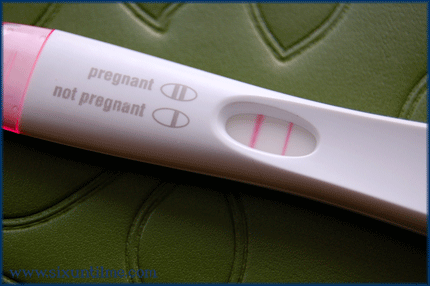Family Creation Options become relevant when facing infertility
Family creating options are not something that we usually think of. We assume that a couple who is together can eventually become pregnant and have a child. It is realistic to say that we are more familiar with ways to avoid a pregnancy than we are aware of ways to bring a child into the family. When a couple cannot have children, it is a common social construct in the US to adopt. There are many children now in the adoption or Foster Care system. According to the organization, Children’s Rights (https://www.childrensrights.org), in 2016 438,000 children were in Foster Care in the United States. According to this same organization many of these children suffer physical and emotional abuse. In this light, it almost feels inhumane not to choose adoption as the family creating option of choice.
Alternative Family Creation Options – Adoption and Surrogacy
Adoption and Surrogacy are both family creation possibilities. Surrogacy can involve the gametes of both mother and father, or can involve the gametes of the Surrogate and the father. Adoption, on the other hand, provides no biological tie to the Intended Parents. In the past, children put up for adoption were usually a result of rape, no access to contraceptives, social disgrace (parents forced their daughter to put the child up for adoption) or the child’s parents passed away.
There are a few women who actually go through a pregnancy after a sexual assault, and those who do could eventually put the child for adoption. It is also a reality that many times the assault is never reported and, therefore, the pregnancy is therefore never officially documented.
Why are babies put up for adoption?
Regarding adoption, many people believe that there is no reason to go through an alternative method of family creation if there are already children than have been born that need a home. What we fail to take into consideration is why these babies are placed in adoption in the first place. American Adoptions have listed “30 Reasons to give your child for adoption”, explaining situations resulting from rape, incest, or other unnatural circumstance that lead to pregnancy. (https://www.americanadoptions.com/pregnant/reasons-to-give-your-child-up-for-adoption)
The following six groups were identified.
- Mother is Unprepared (emotionally and financially)
- Inadequate environment for the baby
- Unworkable time in the mother’s life / Life choice
- Fetus with serious medical conditions – special needs
- Sexual Assault
- Belief System
Parents are both unprepared to become parents
In this article let’s touch upon the reasons that relate to the situation where the parents are unprepared. According to the article, there are two ways in which the mother can be unprepared: emotionally and financially. The article mentions that the mother is unprepared and, yet, a lot of the weight of the decision falls on the woman. It is important to hold both males and females accountable for the pregnancy, so this is how this article will approach the reasons that are included in this specific list.
Couple is unprepared (emotionally and financially)
- They aren’t ready to be a mother/father; they cannot afford the costs of bringing up a baby; they cannot provide the conditions they would like their child to have: If the girl or boy is not ready to be a mother or father, someone needs to explain what being a parent entails. What does ready mean? Not ready to place the child’s well-being above their own? Not ready to face the costs of bringing up the child? If that is the case, then before engaging in sexual activity they should take the appropriate precautions. There are different ways that school, faith and community can and should address the topic in a theoretical and a practical manner. This way they do not become pregnant, and do not put their child up for adoption.
Parents do not want to be Mom and Dad
- She doesn’t want to be a mother, he does not want to be a father; or neither of them feel a connection with the baby: If both the female and male know that they do not want to be burdened with parenthood, then from the start, their families, community and belief system should provide access to contraceptive methods that will allow them to enjoy an active sexual life without having the worry of becoming pregnant. There are permanent and non-permanent ways to deal with birth control. These should be available to those who do not want to have a child.
- They do not feel emotionally prepared to be parents; they do not want others to know about the pregnancy: Both the parents are not ready to be emotionally involved with the baby, or see the baby as an obstacle to achieve their future. They should be taking the appropriate measures not to become parents.
Adoptions mostly occur due to unplanned pregnancies
If the reasons are carefully analyzed, they all come from an unplanned pregnancy. This means that the parents of the child were not paying attention and got pregnant. The child became an obstacle to the plans that they had already envisioned. The child born to these parents do not carry any blame or responsibility for the actions of their parents. The same principle applies to Intended Parents who choose Surrogacy over adoption. The children that find themselves in foster care, are there through no fault of the IPs.
This is why it becomes critical to promote sexual education from an early age for both boys and girls. According to The Canadian’s Women’s Health Network, the new average age when a girl’s body becomes capable of carrying a baby to full term is at 12 years old. Knowing this age as well as when the person decides to become sexually active are clear indicators of when girls and boys should be held accountable so that their children do not become part of the foster care system. Both sexually active boys and girls must have the necessary information to take the necessary precautions not to get pregnant. A plan must be set up if they do happen to become pregnant. This must be a constant conversation.
Children in Foster Care
What to be done with the children who are currently in foster care? Conversations must be had at local schools, local political policies, churches or belief organizations as well as at home, to provide solutions. The creativity and love that can arise from those conversations can help those children. Be a part of it!




